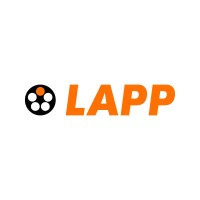
LAPP USA
LAPP North America expertly manufactures the cutting edge cables, connectors, glands and Industrial data communication solutions that help manufacturers automate/ future-proof their factory floors. LAPP products are proven to stand up to the most extreme conditions found in today's industrial environments–vibration, temperature, oil, water, corrosion and wash-downs, as well as custom cable assemblies for power, data/signal, and control applications that allow customers to achieve the greatest productivity by decreasing downtime and optimizing uptime. LAPP’s US HQ is located Florham Park NJ and Canadian HQ is located in Mississauga, Ontario. LAPP’s 130,000 square foot state of the art manufacturing plant, includes an in-house UL Client Data Program & UL certified testing laboratory, to ensure the highest quality industrial Ethernet (IE) & cables available in the market today. LAPP's domestic manufacturing, and coast to coast network of logistics centers, allow us to provide greater inventory, product flexibility, expert custom engineering, and technical customer support capability to meet our customers industrial automation/connectivity needs quickly.






